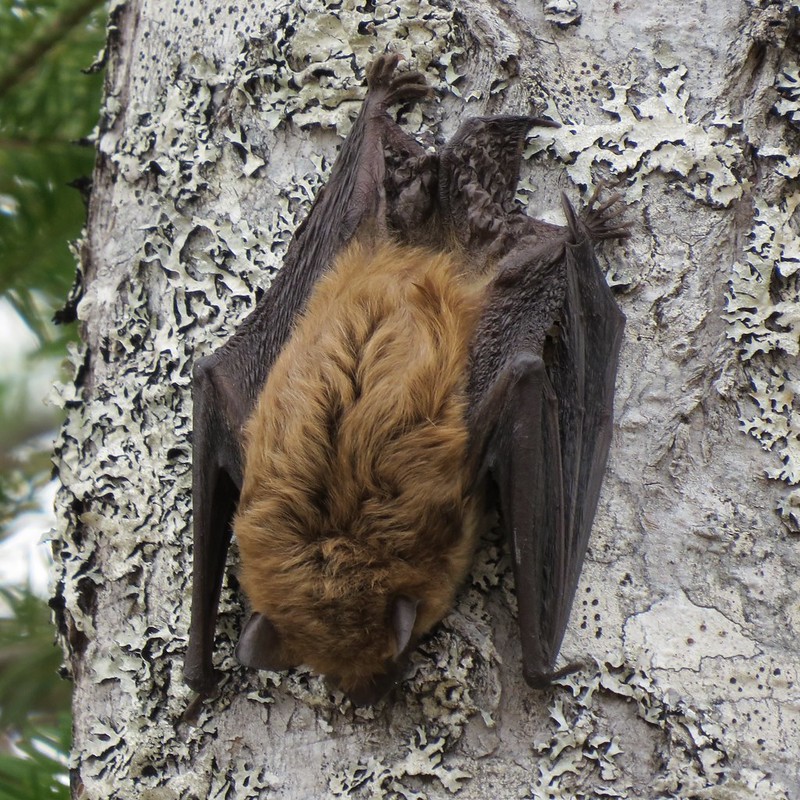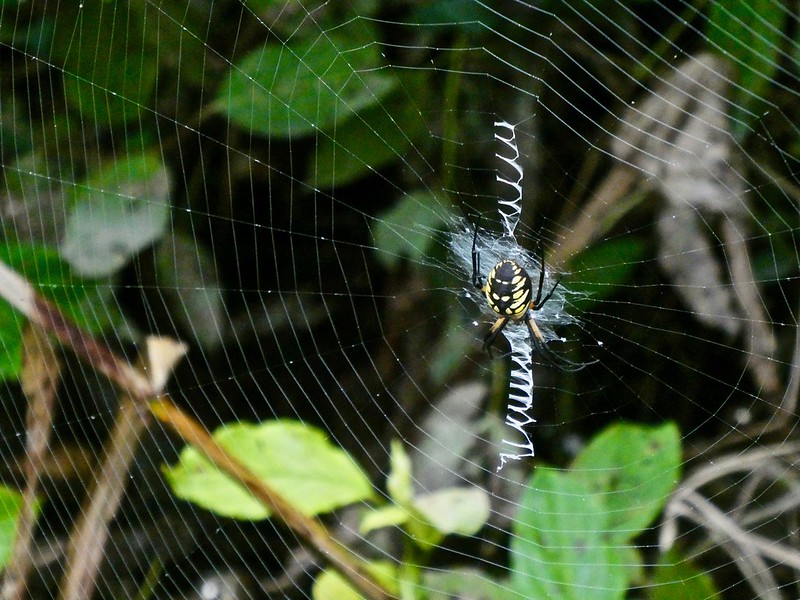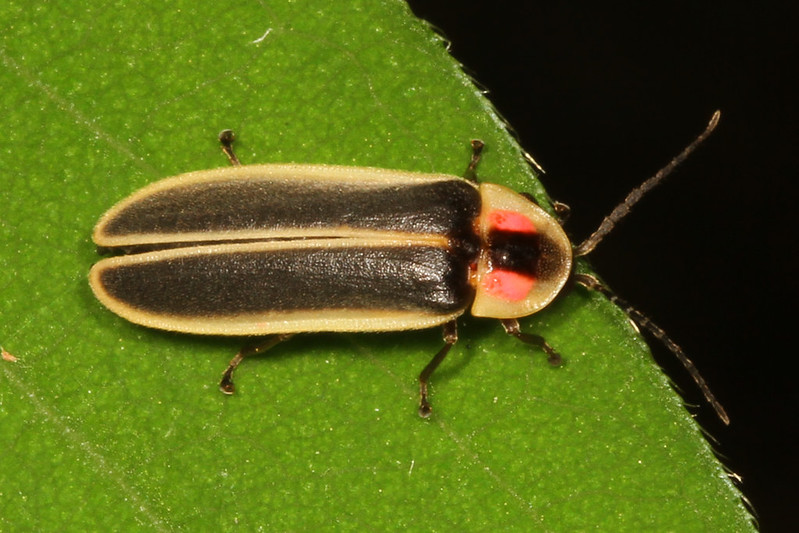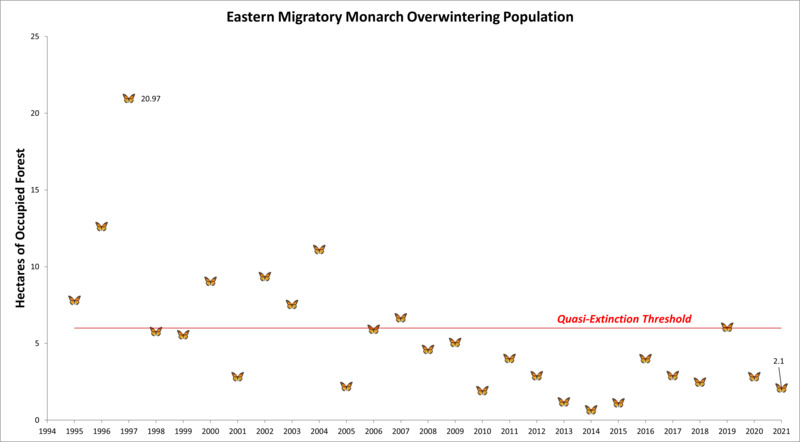How Your Donation Dollars Help
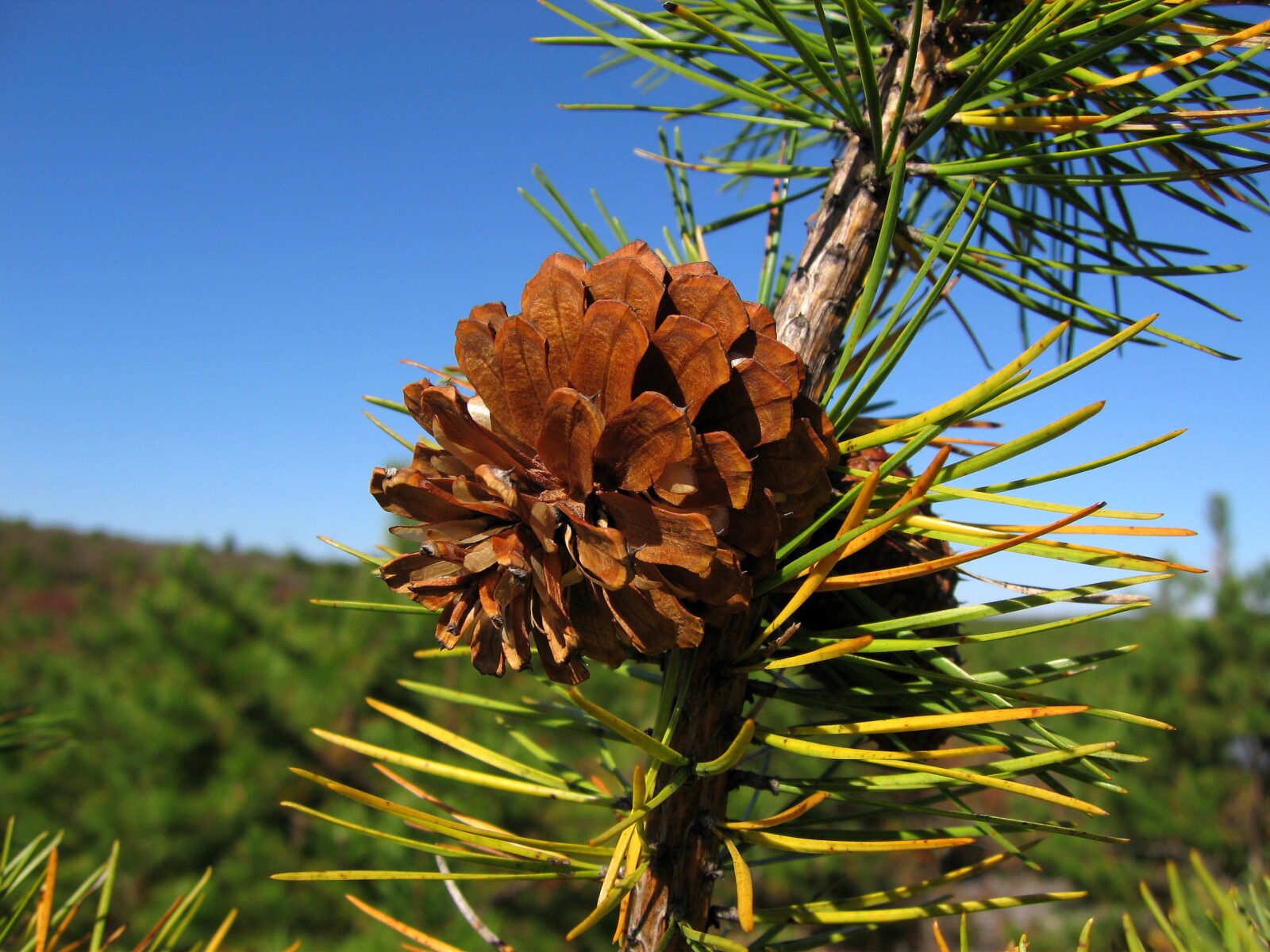
Have you ever wondered how your donation benefits our non-profit organization? Let’s take a look at the important projects your contribution helps fund.
Preserving Our Pine Barrens
Since our founding in 1977, our Society has fought tirelessly to protect over 106,000 acres of land that make up the Central Pine Barrens. Throughout our history, we have effectively advocated for the land our organization is named for in state and local governments as well as in the courts. Our efforts have not stopped, and we continue to work hard to protect our Pine Barrens from destruction and safeguard this globally rare ecosystem for future generations of Long Islanders.
With your support, we are able to monitor any and all proposed development plans in the Pine Barrens and ensure they adhere to the Pine Barrens Protection Act and the Central Pine Barrens Commission’s Comprehensive Land Use Plan. In addition to making sure there is no new development within the Core Preservation Area of the Pine Barrens, we review and investigate new proposals targeted for the Compatible Growth Area and determine if they would be environmentally compatible. We then present our findings to the appropriate town and county oversight agencies, such as the Central Pine Barrens Commission, which is tasked with managing land use within the Pine Barrens.
We also advocate for funding and resources to help maintain the health of the Pine Barrens. Since the Pine Barrens is a fire-dependent ecosystem, prescribed burns are needed to support the survival of this important ecological community. Scheduled burns also help protect the surrounding community because without them, there is a risk of out of control wildfires causing damage to homes and people. These planned efforts are collaborations between the Central Pine Barrens Commission, the New York State Department of Environmental Conservation, the Brookhaven National Laboratory, and local fire departments. Fire management helps trees be more resistant to the deleterious effects of the Southern Pine Beetle that has posed a significant threat to pine trees, particularly pitch pines, in recent years.
Using your donation dollars, we are able to be the voice of the Pine Barrens, and because of you, we have been able to launch a new campaign to acquire an additional 3,800 acres of land.
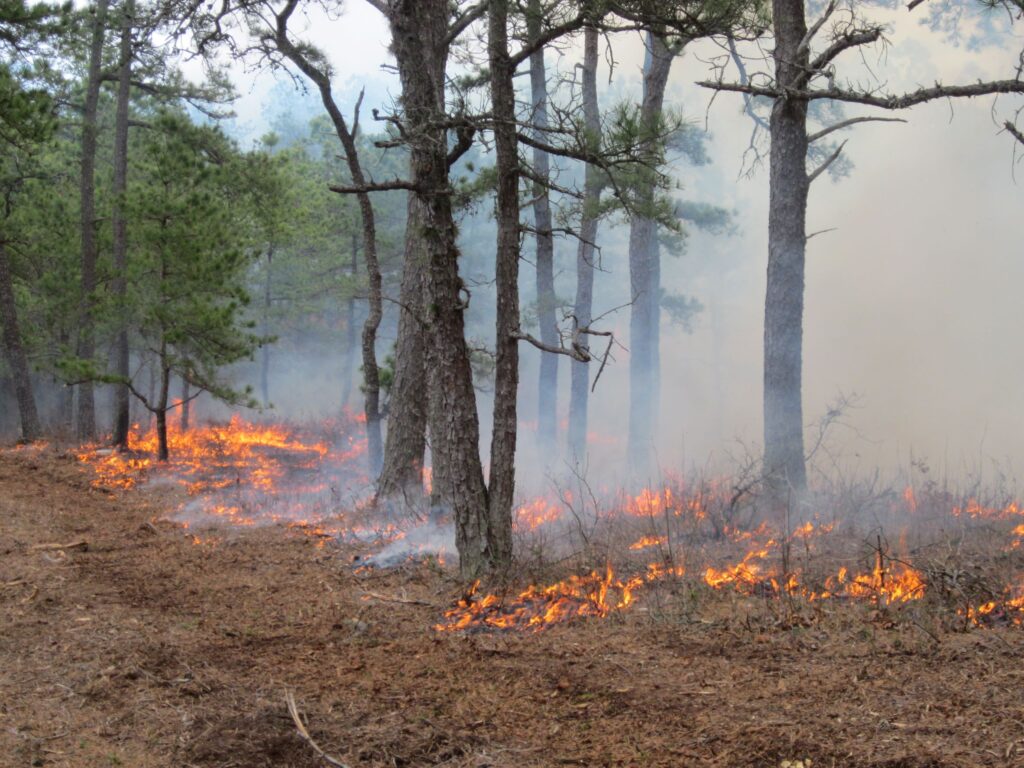
Prescribed Burn in the Pine Barrens.
Credit: United States Fish and Wildlife Service
Protecting Our Drinking Water
Our non-profit also advocates for efforts to improve Long Island’s declining water quality. Since our island’s drinking water comes from underground aquifers, anything we do above ground affects our water supply. We help promote initiatives that help mitigate the negative effects that come from the way we use our land, such as Suffolk County’s septic system replacement program, known as the Reclaim Our Water Initiative, that would reduce the amount of nitrogen contaminating our groundwater. Our Society also focuses on educating the Long Island public about this crucial issue.
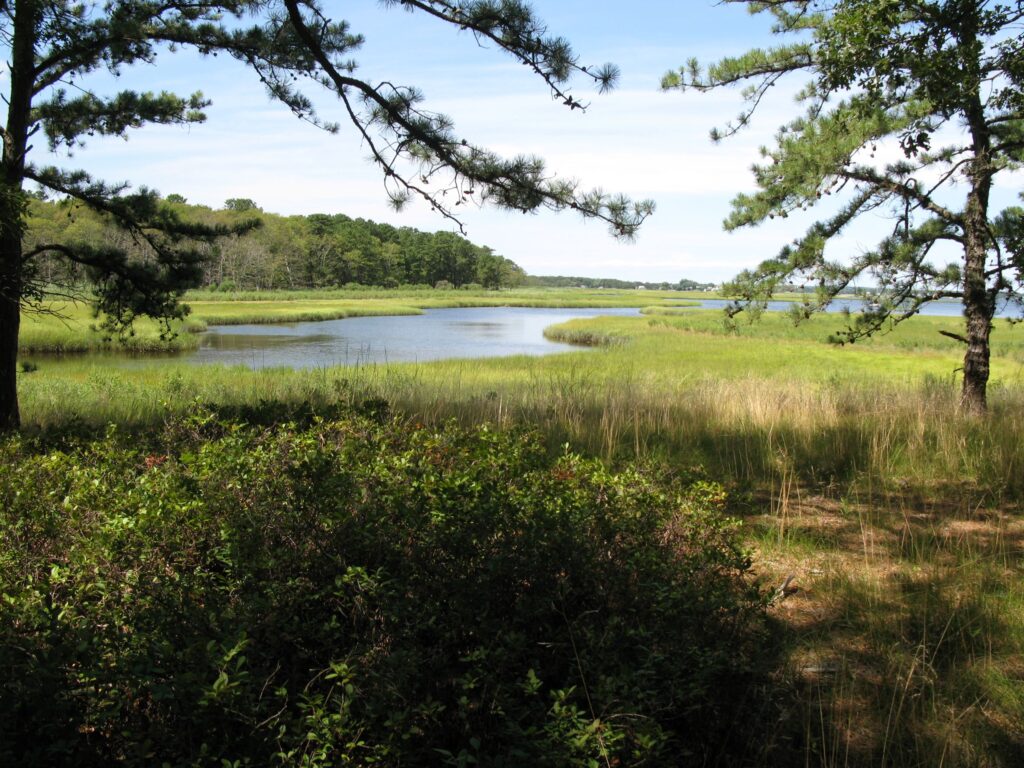
Peconic River through Pines.
Credit: Sandy Richard
Educating Our Children
Our organization is also involved in the education system. For the past ten years, with the support of the National Grid Foundation, we have been hosting the annual Middle School Kids Go To College program. Middle school kids participate in a science competition, where they present their innovative solutions to address Long Island’s water quality crisis after researching the issue. In the past, this event has been held at Stony Brook University’s School of Marine and Atmospheric Sciences, however in recent years, we have adapted the program to be virtual in order to continue to provide this valuable opportunity to kids during the pandemic.
We are also getting involved with organizing field trips in the Pine Barrens, where kids in elementary school all the way up to high school can participate in fun activities that help them learn about our remarkable natural resource.
In addition, we recently initiated a scholarship program in 2020 in memory of Robin Hopkins Amper, who was instrumental in helping to preserve the Pine Barrens. Long Island students who share Robin’s commitment to the environment and who are pursuing an undergraduate degree have the opportunity to be awarded $5,000 through our scholarship fund.

Stony Brook University Professor Dr. Christopher Gobler with Patchogue-Medford Middle School Kids at the School of Marine and Atmospheric Sciences in May 2019 during the Middle School Kids Go To College Program.
Engaging the Public
In addition to being involved with education in schools, our organization works to engage the public with our local environment. We promote environmental stewardship and educate the community through informative newsletters, news articles, television programs, blog posts, and social media. On our website, we provide a variety of recreation guides with detailed information as well as quick tips about how you can enjoy the Pine Barrens. We also occasionally offer guided hikes or kayak tours that aim to get people outside and experience the wonderful natural areas that have been preserved for them.
Check out our Bridge to the Barrens blog on our website, our YouTube page featuring our TV shows, and our Facebook and Instagram pages to stay engaged with us.
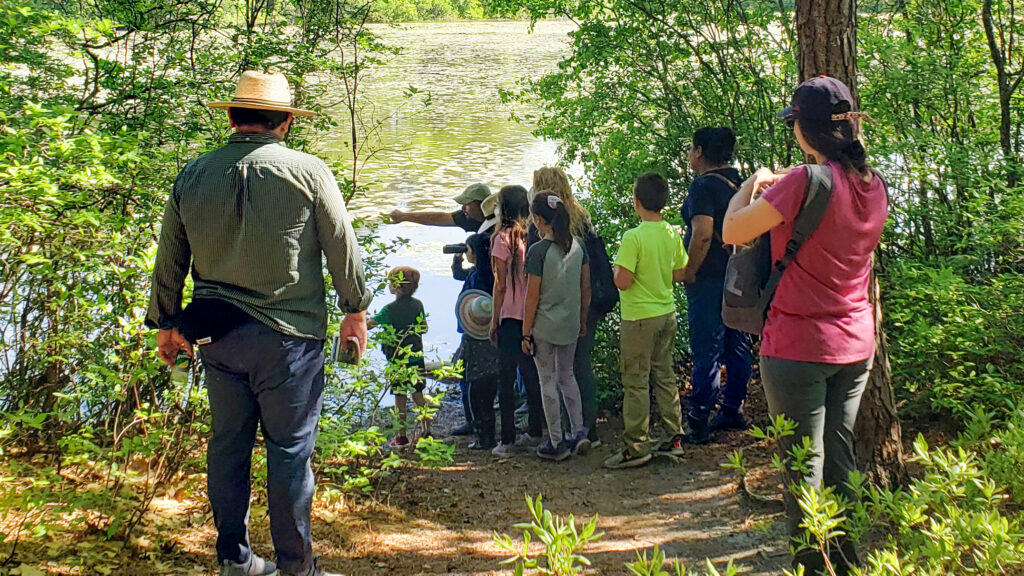
Guided Hike at Shoreham-Wading River Coastal Forest with LIPBS Co-founder and Naturalist, John Turner, in June 2021.
Hopefully, you now see how meaningful your contributions are to not only our organization, but also to your local community. We are so grateful to all of our past donors because we could not have accomplished our goals and provided opportunities to the community without them.
Our work is never finished as there are new challenges arising every year. If you haven’t already, please consider making a donation to the Long Island Pine Barrens Society by visiting our website and clicking on Contribute under Support Us. To specifically donate to the scholarship program, click on Robin Amper Memorial Scholarship. We truly appreciate your generosity!
By: Kaitlyn Sherman, Long Island Pine Barrens Society
Katie Muether Brown
Cover Photo: Sandy Richard
Posted on July 20, 2022 by Long Island Pine Barrens Society
Summer Recreation in the Pine Barrens
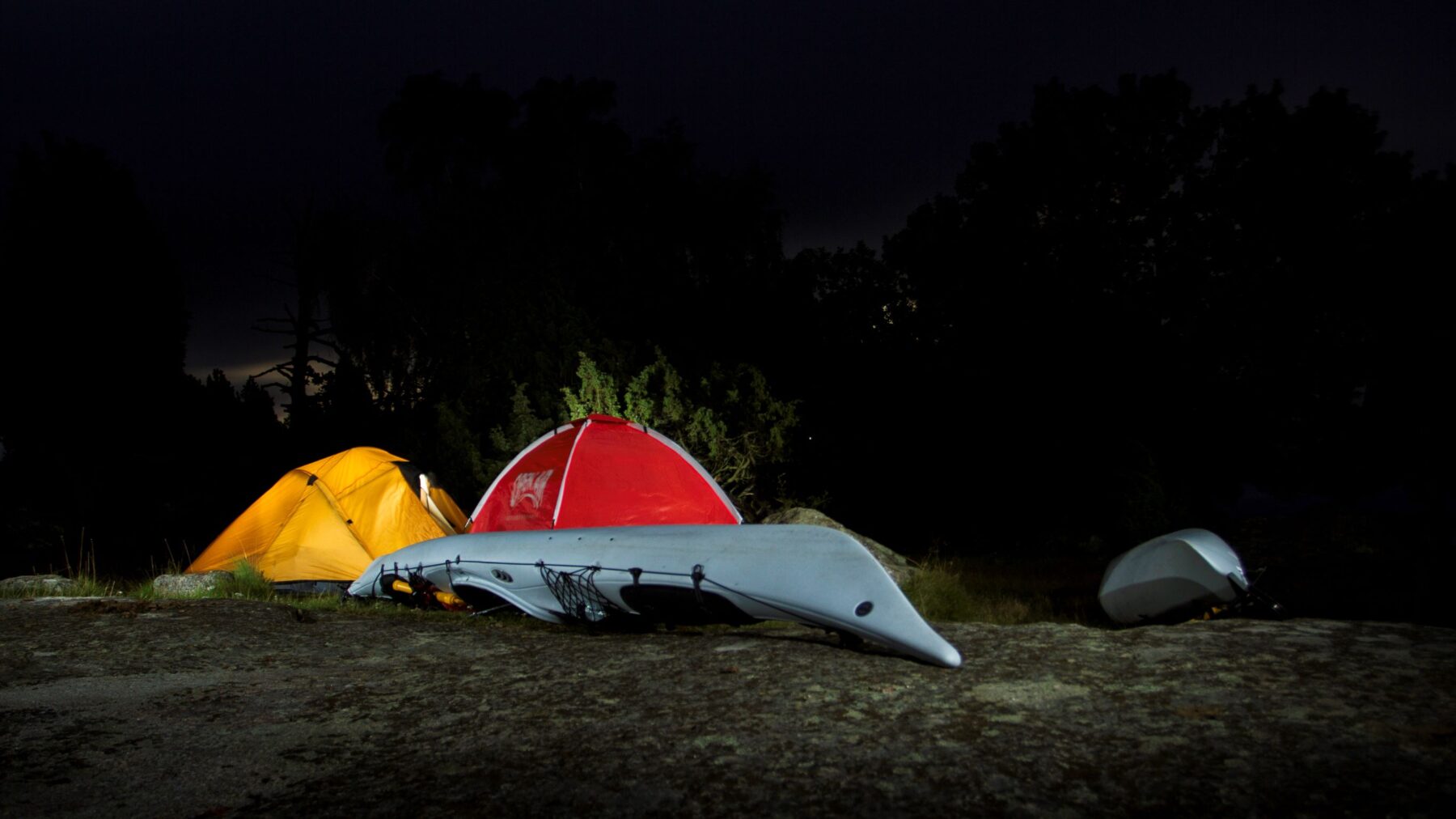
Summer weather is finally here! Whether you’re spending time with your family or flying solo, there are many ways to get out of your house and appreciate the sunshine and warm temperatures. Let’s explore some fun activities you can enjoy in our very own Pine Barrens.
Kayaking, Canoeing, and Row Boating
Living on an island, we are lucky to have access to water all around us. Bored with going to the beach? Trade your swimsuit and towel for an oar or a paddle!
Journey down the scenic Carmans River, and observe the different fish and wildlife that inhabit the river and its shores. You might see some turtles sunbathing on nearby logs or along the river banks. You are also bound to see a large variety of birds if you pass through the Wertheim National Wildlife Refuge in Shirley, which is home to almost 300 bird species. Carmans River Canoe & Kayak II, located on Montauk Highway in Brookhaven, offers rentals and guided tours. If you’re feeling adventurous, check out their moonlight guided tour. In addition, rowboat rentals are offered by Suffolk County Parks at Southaven County Park in Yaphank, which the Carmans River flows through. Fun fact: Southaven County Park was the site of the Pine Barrens Protection Act’s signing in 1993.
Another Pine Barrens park kayakers, canoers, or row boaters can enjoy is Indian Island County Park in Riverhead. This park features a self-launch area along the Peconic River. Need to rent? Peconic Paddler offers a variety of options, including numerous types of kayaks, canoes, and stand-up paddle boards. Enjoy the distinctive ecology of the Peconic Estuary, and observe the many unique aquatic species, such as bay scallops, summer flounders, and eelgrass.
Kayaking, canoeing, and row boating are not only fun pastimes, they are also great workouts! Your arms might be sore the next day, but you won’t care after experiencing the wildlife that makes Long Island special.
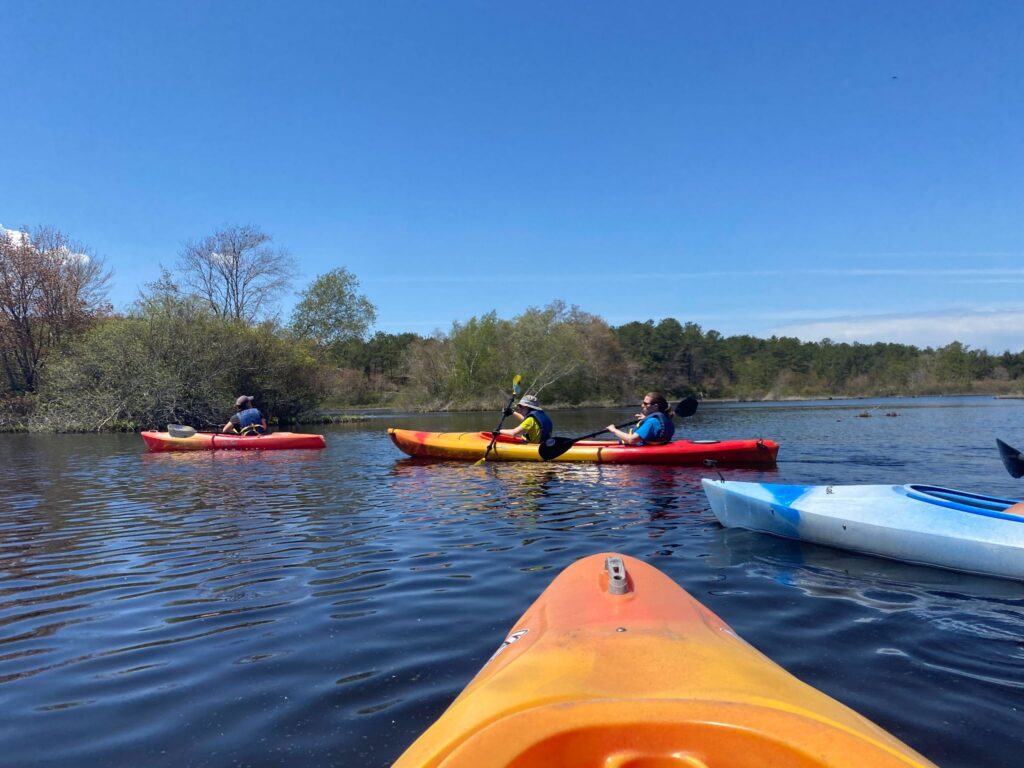
LIPBS Guided Kayak Tour at Quogue Wildlife Refuge in May 2021.
Credit: Long Island Pine Barrens Society
Fishing
Whether you enjoy freshwater or saltwater fishing, there are many great fishing spots in the Pine Barrens.
Sears Bellows County Park in Hampton Bays features a plethora of freshwater ponds and creeks, where you can catch many different fish, such as bluegill, bass, perch, and pickerel. Another great freshwater fishing spot is Swan Pond in Calverton, which offers a relaxing natural environment for anglers. Many fish species inhabit this pond, including yellow perch, pumpkinseed, sunfish, and brown bullhead. Further west in Middle Island is Artist Lake, an irregular-shaped lake that contains a variety of warm-water fishes. This lake is a great place to catch largemouth bass, black crappie, chain pickerel, and common carp. Make sure to purchase your New York State Fishing License through the Department of Environmental Conservation.
For those interested in saltwater fishing, you can visit Indian Island County Park in Riverhead, where the Peconic River empties into Flanders Bay. Some marine fish you might catch here are bluefish, porgy, striped bass, and weakfish. Anglers will also enjoy the peaceful view of Flanders Bay, which is situated between the north and south forks of Long Island.
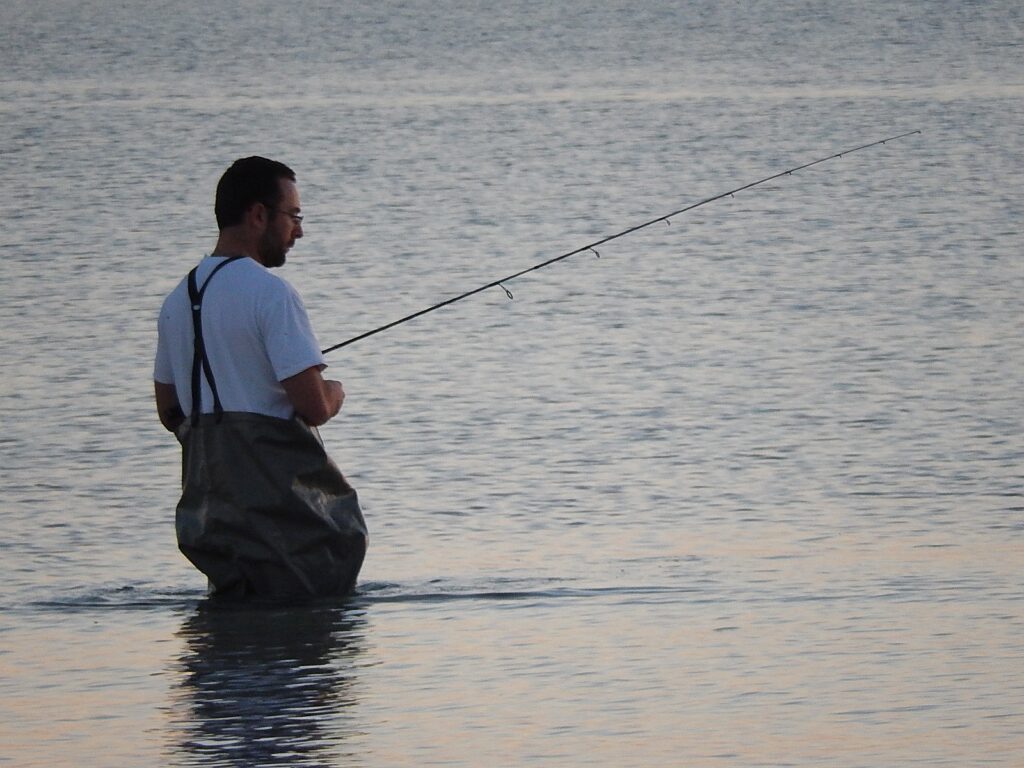
Credit: Michael Coghlan
Camping
What’s a better way to celebrate summer than to sit around a campfire and eat s’mores? Whether you’re roughing it with a tent or you have a travel trailer or RV, there are plenty of Pine Barrens parks that offer camping sites.
Located along the headwaters of the Carmans River, Cathedral Pines County Park in Middle Island offers over a hundred campsites for tents and trailers, with 10 sites equipped with water and electric hookups. While staying at this park, you can go hiking in the nearby Prosser Pines Nature Preserve, another Pine Barrens park that contains impressive White Pines. Don’t forget to check out the cool Tree Fort there!
A little further south along the Carmans River is Southaven County Park in Brookhaven. Over 1,300 acres in size, this park has sites for tents and trailers, with 51 sites that have electric hookups. As discussed earlier, Southaven also offers rowboat rentals, so you can explore the wildlife while traveling down the beautiful Carmans River. Anglers will also enjoy camping at this park as freshwater fishing is permitted here. Don’t miss the Long Island Live Steamers‘ ridable steam, diesel, and electric trains that are perfect for the whole family!
Not only is Indian Island County Park in Riverhead a great place for water recreation activities, it is also a popular camping site. This scenic park near the Peconic River features sites for tents and trailers as well as restrooms and shower facilities. Fishing, kayaking, bird watching, and hiking are all activities you can enjoy while camping at Indian Island. This park also offers one of the finest picnicking sites in Suffolk County.
Another great camping spot on the south fork is Sears Bellows County Park in Hampton Bays. This park contains 30 tent sites and 40 trailer sites. Rowboat rentals are offered on freshwater Bellows Pond, where fishing is also permitted as mentioned before. There is also an extensive trail system that is popular among hikers.
Plan your trip and make a reservation at one of these parks today!
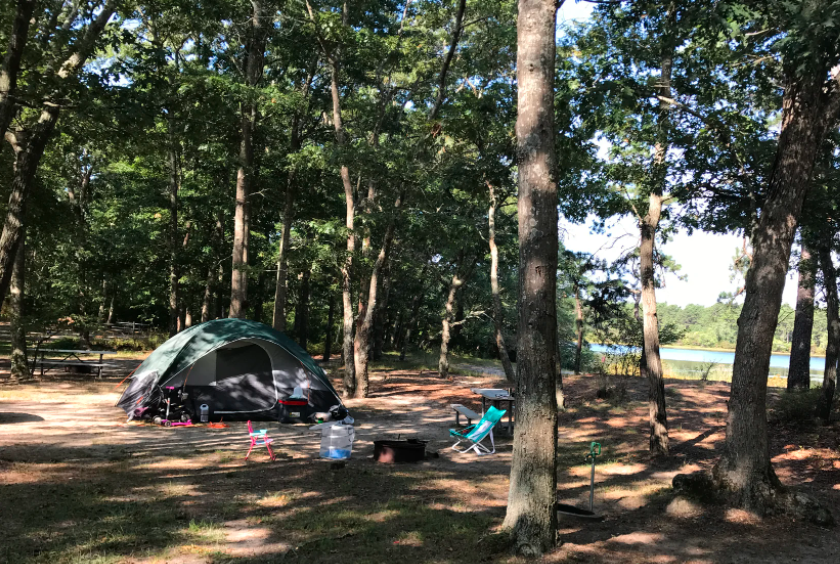
Camping in Sears Bellows County Park.
Credit: Gino D. (thedyrt.com)
Nothing is better than spending time in nature and letting your worries drift away, with the summer breeze blowing through the trees. Take some time to appreciate the Long Island Pine Barrens by participating in these delightful activities with your friends and family. Check out our recreation guides on our website for more helpful information. Enjoy!
By: Kaitlyn Sherman, Long Island Pine Barrens Society
Cover Photo: Frank Schmidt
Posted on June 24, 2022 by Long Island Pine Barrens Society
Endangered and Threatened Species on Long Island
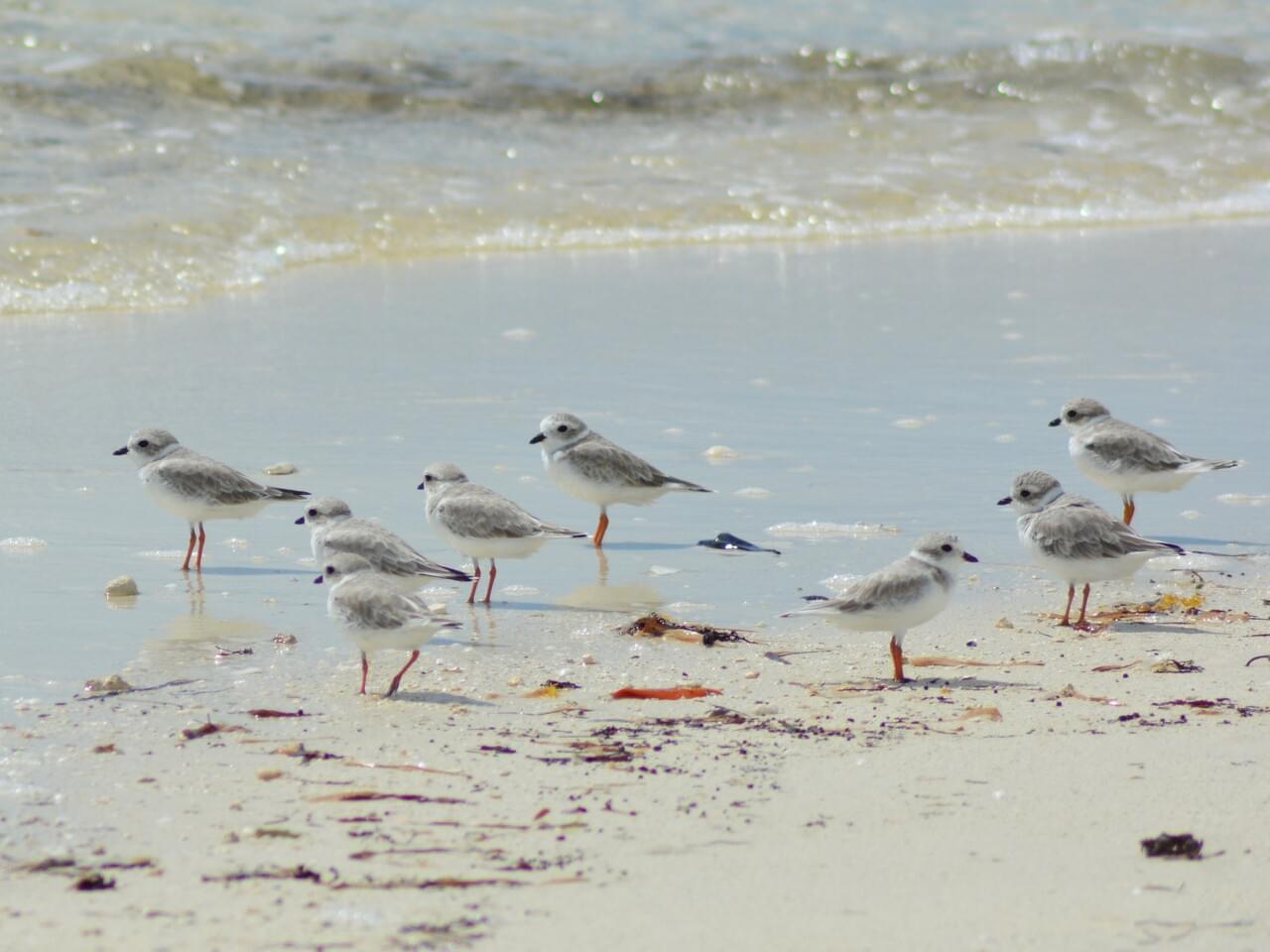
Friday, May 20th is National Endangered Species Day. Many remarkable creatures inhabiting our local environment are at risk of disappearing forever. This is an unfortunate reality for several Long Island wildlife species. Let’s learn about some of these vulnerable reptiles, amphibians, birds, and insects and how we can help them continue to call Long Island home.
But first, let’s define some important terms. What does endangered mean? The New York State Department of Environmental Conservation (NYSDEC) defines endangered as “any native species in imminent danger of extirpation or extinction in New York State.” Extinction means no longer living or existing anywhere, whereas when a species is extirpated, it is locally extinct. So, there are no populations left in New York, but the species is still found in other states. Finally, when a species is listed as threatened, it is likely to become endangered in the near future.
Now let’s look at some of the unique Long Island wildlife that are in danger of being lost to history.
Endangered Species
Eastern Tiger Salamander (Ambystoma tigrinum)
This amphibian spends the majority of its life in its burrow underground, but it comes out at night to breed in ponds. In New York State, the Eastern Tiger Salamander is found exclusively on Long Island, mostly within the central Pine Barrens. Recent surveys have identified only 90 breeding ponds in eastern Nassau and Suffolk County. This mole salamander has been extirpated from western Long Island because of heavy development resulting in loss of habitat. Additional threats to this species include pesticide contamination and introduction of predatory fish in its breeding ponds as well as increased road construction and development. There has been a recent effort to construct tunnels under roadways for this salamander, so it can safely migrate to ponds for breeding. You can help this wonderful amphibian by not using pesticides on your lawn or in your garden – try a natural alternative to avoid contributing to contamination of ponds and waterways.
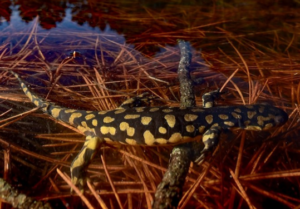
Eastern Tiger Salamander
Credit: Alex Roukis
Eastern Mud Turtle (Kinosternon subrubum)
This small hard-shelled reptile only measures 3-4 inches long! This semi-aquatic turtle can be found in marshes, small ponds, wet ditches and fields, and offshore islands. When its habitat dries up, it travels on land to another body of water. This short journey could land this turtle in trouble – turtles are very often killed by cars when attempting to cross roads. Other threats to the Eastern Mud Turtle include habitat loss due to the draining of wetlands for urban and industrial development, land clearing, habitat fragmentation from road construction, and the illegal pet trade. The NYSDEC recommends habitat management activities, such as placing “turtle crossing” signs along roads to warn drivers as well as protecting areas where mud turtle populations currently reside. Help protect the rarest turtle species in New York by looking out for this creature when you’re driving and avoiding keeping it as a pet.

Eastern Mud Turtle
Credit: animalspot.net
Piping Plover (Charadrius melodus)
You can find this sand-colored shorebird on Long Island’s sandy beaches from Queens to as far east as the Hamptons. From early to mid-March, this species starts breeding and building nests in preparation for laying eggs between May and early July. Unfortunately, the Piping Plover is continually threatened by increasing human activity. Coastal development, recreational activities, and disturbance by off-road vehicles all compromise its breeding habitat. These problems are not exclusive to New York State; this bird is listed as endangered in many other eastern states as well. You have probably seen signs and fencing surrounding the dunes at your local beach. These serve to protect this bird’s nesting and feeding sites. Long Island conservation efforts also include annual censuses of the plover’s breeding colonies and active monitoring of its nesting sites to help increase nesting success. Help protect this bird by keeping off the dunes during the spring and summer seasons, or even become a volunteer to assist with yearly breeding surveys.
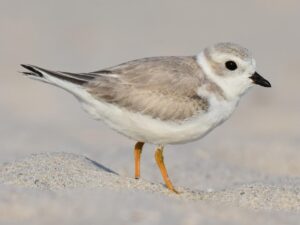
Piping Plover
Credit: AllAboutBirds.org
Hessel’s Hairstreak (Callophrys hesseli)
This butterfly species is rather unique because it feeds only on the Atlantic White Cedar tree. Unfortunately, the Hessel’s Hairstreak is believed to be extirpated from New York State as it has not been observed since the mid-1990s. Spraying of harmful pesticide DDT (dichloro-diphenyl-trichloroethane) in the 1950’s for gypsy moths wiped out many colonies and the population is still struggling to recover. In addition, much of its Atlantic White Cedar swamp habitat has been converted to agricultural land. It is important to protect what is left of these swamps as well as maintain cedar tree populations in order to help safeguard this beautiful butterfly.
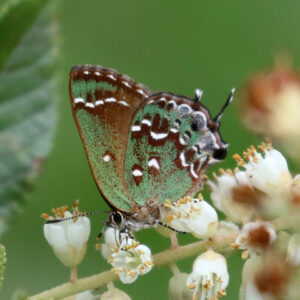
Hessel’s Hairstreak
Credit: butterfliesandmoths.org
Threatened Species
Pine Barrens Bluet (Enallagma recurvatum)
This damselfly (smaller than a dragonfly) inhabits coastal plain ponds in our very own Pine Barrens! Just one inch long, the Pine Barrens Bluet lives only three to four weeks. Threats to this species include anything that leads to water pollution, like roadway or agricultural run-off, eutrophication and nutrient loading from fertilizers, herbicides, and septic systems, or development near their habitats. Invasive plants, like the white water lily, that are replacing native plants are an additional risk to the bluet population. To combat the decrease in bluet numbers, the New York Natural Heritage Program suggests restoring native vegetation as well as maintaining good water quality by reducing run-off and other sources of pollution.
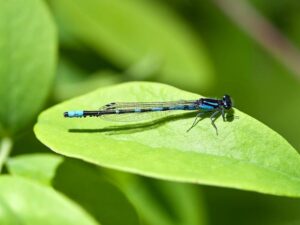
Pine Barrens Bluet
Credit: New York Natural Heritage Program
Northeastern Beach Tiger Beetle (Cicindela dorsalis dorsalis)
This cool insect gets its name from its aggressive predatory behavior – it grasps prey with long mandibles (mouthparts) in a “tiger-like” manner. This species feeds on lice, fleas, and flies as well as scavenges dead crabs and fish. This beetle used to be very common on Long Island beaches, but unfortunately it is no longer found anywhere in New York State. The only known population north of Maryland is on Martha’s Vineyard. The depletion of its population is attributed to habitat degradation by off-road vehicle use and increased foot traffic on beaches. Larvae are deeply affected by these activities because they are crushed by the heavy physical impact. Without larvae, the Northeastern Beach Tiger Beetle isn’t be able to produce enough individuals to ensure its long-term survival. The NYSDEC recommends translocating beetles from other areas, like the Chesapeake Bay, to help restore the species in its historical range. However, current beach activities will need to be addressed prior to this effort.
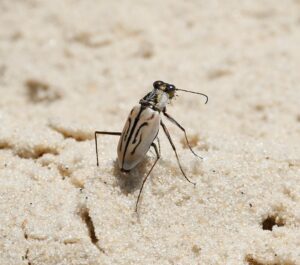
Northeastern Beach Tiger Beetle
Credit: chesapeakebay.net
There are so many neat species on Long Island that we may not be able to see for much longer. These animals are part of what makes our island such a unique place to live. Help protect these remarkable creatures by avoiding animals while you are driving, using natural alternatives to pesticides, and being more aware of the environment around you. Consider becoming a volunteer in your local community to support the recovery of the populations of these species.
By: Kaitlyn Sherman, Long Island Pine Barrens Society
Sources:
https://www.dec.ny.gov/animals/7494.html
https://guides.nynhp.org/hessels-hairstreak/
https://guides.nynhp.org/pine-barrens-bluet/
Cover photo: A group of piping plovers on the beach. Credit: AllAboutBirds.org
Posted on May 17, 2022 by Long Island Pine Barrens Society
Earth Day: Its Origin and Significance
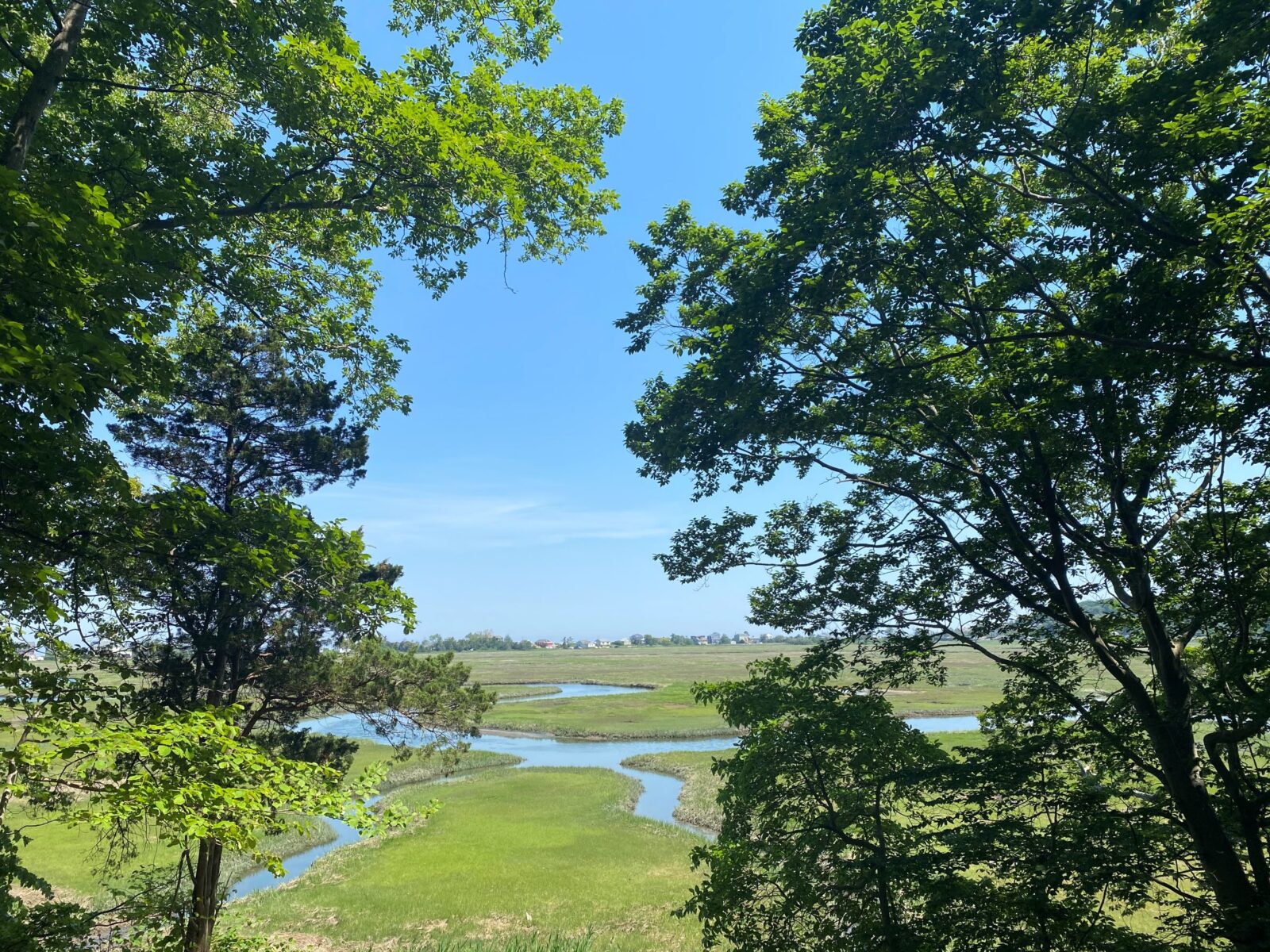
Every year, the world celebrates Earth Day, a day that demonstrates support for the protection of our amazing planet and raises awareness of environmental issues. Earth Day is the most widely-celebrated non-religious annual event held worldwide.
Its origin dates back six decades. During the 1960s, the American public was starting to realize how pollution was negatively affecting the environment. A big part of that newfound awareness was attributed to Rachel Carson’s Silent Spring, which was published in 1962 and documented the harmful effects of the pesticide DDT (dichloro-diphenyl-trichloroethane) on nature and human health. Carson’s bestselling book is credited as initiating the modern environmental movement in the United States. Another major event that led to an increase in environmental activism was the Cuyahoga River fire in Cleveland, Ohio in 1969 due to decades of industrial pollution. That caught the attention of many Americans and encouraged them to join the fight to save the planet.
One of the leaders of this fight, Democratic Senator Gaylord Nelson from Wisconsin, came up with the idea for Earth Day in 1969. His goal was to force the federal government to address the environmental problems that were plaguing the country. What was his inspiration? Anti-Vietnam War “teach-ins” that were being held on college campuses. Nelson hoped to mirror these teach-ins through a large-scale, grassroots environmental demonstration to raise public and government awareness of pollution.

The first Earth Day on Long Island, 1970.
Credit: Newsday
And who was tasked with organizing this national effort, you might ask? A young activist named Denis Hayes dropped out of Harvard to become the national coordinator of the first Earth Day. On April 22, 1970, rallies were held all over the country to help focus national attention on environmental issues. In New York City, a section of Fifth Avenue was closed off, and Mayor John Lindsay gave a speech at a rally in Union Square.
So, did it work? Of course! The first Earth Day transformed the American public’s attitude toward the environment. Only a few years before, the majority of the country’s population wasn’t concerned with the state of the planet. However, after April 22, 1970, the U.S. public was much more interested in protecting nature. And, in the decade after Earth Day, the federal government went on to establish several crucial pieces of environmental legislation, such as the Clean Air Act, the Clean Water Act, the Endangered Species Act, and the National Forest Management Act to name a few. In December 1970, the Environmental Protection Agency (EPA) was formed.

President Richard Nixon signing the Clean Air Act.
Credit: Associated Press
And the Long Island Pine Barrens Society was not that far behind in the environmental movement. Founded in 1977 by three environmental science students, our non-profit organization has grown from a small group focused on educational awareness to a team continuing to build an active preservation campaign. We created the Pine Barrens Preservation Initiative in November 1989, five months before the 20th anniversary of Earth Day. Our hard work paid off four years later when the Long Island Pine Barrens Protection Act was passed, preserving more than 100,000 acres of land.

LIPBS Founders with former New York State Governor George Pataki. Order from left: John Turner, Bob McGrath, John Cryan, George Pataki.
Credit: Long Island Pine Barrens Society
Today, Earth Day is celebrated by more than 180 countries around the world. And although there has been a lot of progress made in the last 50 years, there is still more to be done in order to protect our planet’s natural resources. This April 22, think about ways you can help make a difference for the environment, such as limiting your water usage, using environmentally friendly cleaning products, recycling, using less paper, or composting. Check out this list of tips from EarthDay.org and start incorporating these simple actions in your daily life to help the planet. Need help knowing what and where to recycle? Visit this website to search for recycling facilities in your area and what materials they accept. Want to know how much you are contributing to greenhouse gas emissions? Calculate your carbon footprint with EPA’s Household Carbon Footprint Calculator.
As you can see, there are many ways you can help support the protection of our environment. Earth Day is an important day that reminds us to celebrate the planet that does so much for us and inspires us to safeguard it for the next 100 years and thereafter. Start making a difference for our environment today!
By: Kaitlyn Sherman, Long Island Pine Barrens Society
Sources:
https://www.history.com/topics/holidays/earth-day
https://awesomeearthkind.com/podcasts/from-earth-day-everywhere-to-proving-the-possible/
https://www.earthday.org/earth-day-tips/
Cover Photo: Shoreham-Wading River Coastal Forest
Posted on April 18, 2022 by Long Island Pine Barrens Society
How do flowers know to bloom in the spring?
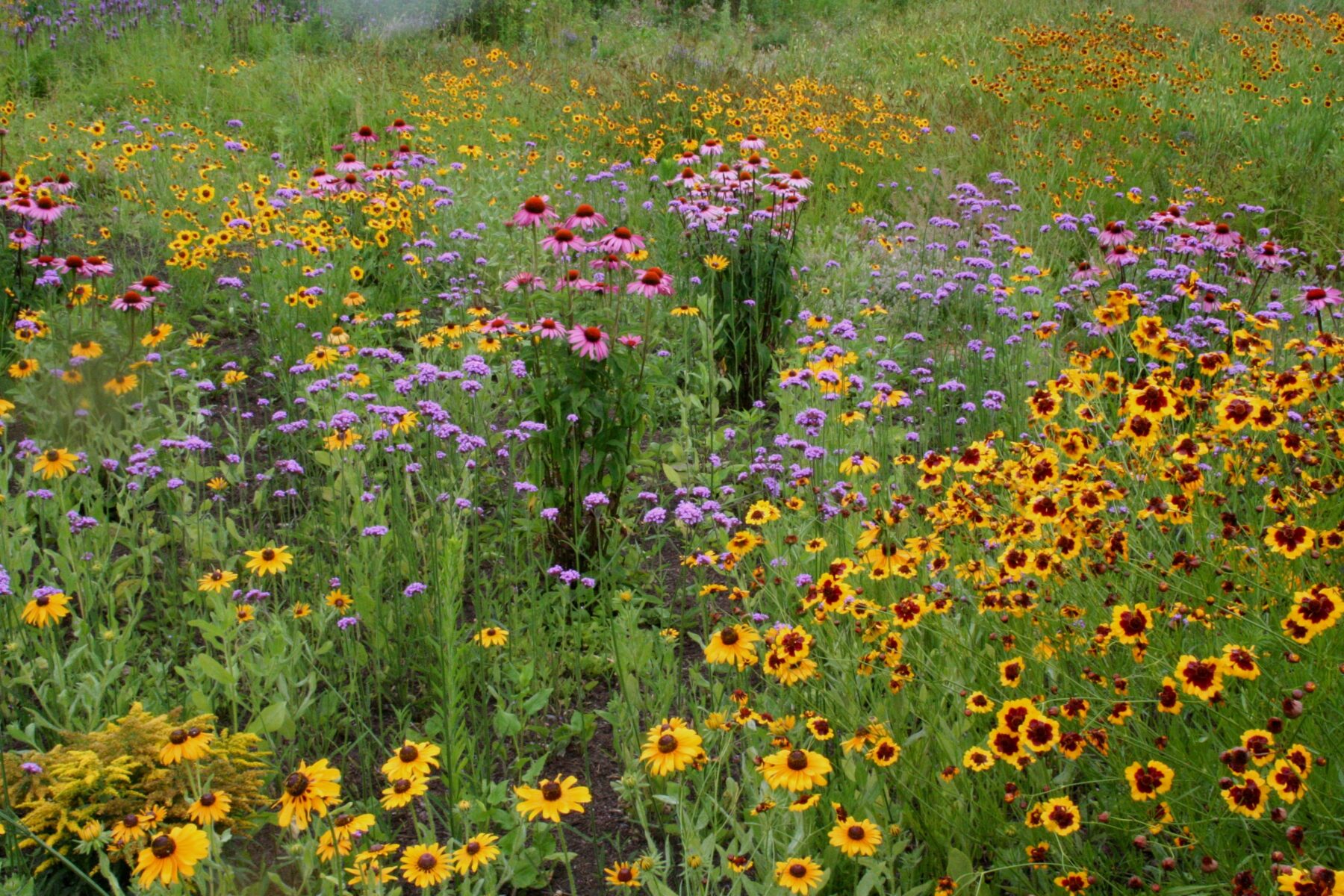
As the weather gets warmer and the sun starts shining, you may be starting to see some flower buds opening up to greet you this spring season. Have you ever wondered how flowers know when to bloom? The answer lies in their genes.

Spring buds
The blooming process is initiated by just one protein! As the days start getting longer, and the number of daylight hours begins to increase, a plant protein called “CONSTANS” (“CO”) is activated within the plant. Next, CO triggers another protein known as “Flowering Locus T”, or simply “FT.” Plants produce more FT with warmer temperatures. FT causes the plant to start producing a gene called “APETALA1,” which in turn produces the APETALA1 protein. This protein then activates more than 1,000 other genes involved in the flowering process. For example, it signals genes that are responsible for leaf growth to stop producing leaves, and instead start producing flowers.
Wow! Who knew how much was involved in the flower blooming process? There are even more plant components that participate in this system – we’ve only discussed the primary ones!

Native wildflower Eastern Purple Bladderwort
So, now that we figured out the general process for how plants bloom, you may be thinking to yourself, “Well, not all plants flower at the same time.” And, you would be right!
Different plants blossom at different times in order to further their survival. Once a flower blooms, it is pollinated by insects, such as bees or butterflies. These pollinators help transfer pollen from one flower to another, which fertilizes the plants and leads to seed production. The seeds are then dispersed from the plants by forces like wind or birds, and they eventually germinate and grow into other plants.
If all flowers bloomed at the same time, the bees and butterflies would not be able to pollinate all of them, which would mean that many flowers would not produce seeds. This would pose a problem because the growth of new plants would stop, and ultimately, you would not see as many different types of plants. Thus, different plants bloom at different times of the year in order to give themselves the best chance of survival. We are lucky that this is the case because we get to see a large variety of flowers throughout the spring, summer, and even fall seasons!
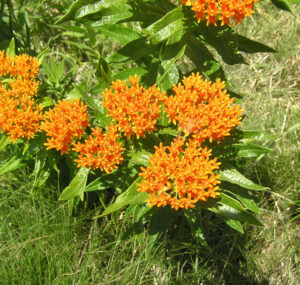
Native plant Butterfly Milkweed
Image: Wildflower.org
So, the next time you find yourself enjoying the weather on your front porch or in your backyard, take a moment to appreciate the hidden complexity of the flowers blooming in your garden, and be grateful for the variety of plants that exist in our natural world!
By: Kaitlyn Sherman, Long Island Pine Barrens Society
Sources:
https://www.livescience.com/32529-how-do-flowers-know-when-to-bloom.html
https://www.phipps.conservatory.org/blog/detail/biopgh-blog-how-do-buds-know-when-to-bloom
https://jakesnatureblog.com/2015/06/01/why-do-flowers-bloom-at-different-times-of-the-year/
Posted on March 31, 2022 by Long Island Pine Barrens Society
Resolutions to Start in 2022

It’s that time of year again when we all reflect on the past year and start planning for the year ahead. The new year is always a great time to start out fresh and think about adopting some new habits. In this blog, we’ll outline some New Year resolutions for you to consider!
Take more walks
The mental and physical benefits of moving your body and getting out into nature are well-documented. The Long Island Pine Barrens is filled with beautiful natural spaces for you to explore. Whether you’re looking for a quick 30-minute power walk or an extensive several miles-long hike, the Pine Barrens has you covered! Check out our recreation guides to help you get started. Or check out one of our past blog posts that outlines our Top 5 Favorite Pine Barrens Hiking Spots.

Make the switch to reusable products
It’s no secret that we have a global waste issue that is greatly impacting our environment. Making the switch to reusable products can greatly reduce your waste and save you some money! Here are some great, easy switches to make: reusable water bottles (instead of individual plastic bottles); hand towels (instead of paper towels); rechargeable batteries; reusable grocery bags; reusable straws; reusable k-cups or tea strainers; or glass storage containers (instead of plastic wrap or sandwich bags). The possibilities are endless!
Learn more about Long Island’s natural environment
Long Island’s natural environment is a fascinating subject to study, filled with geology, ecology and history lessons! How was Long Island formed? What kind of plants and animals can you find on Long Island? Did you know we have a globally-rare ecosystem on Long Island? Why can wildfire be a good thing? These are just some of the questions that you can work to find the answers to!
Here is some suggested reading from our website to help you get started in your learning quest:
- What is the Long Island Pine Barrens?
- Long Island’s Coastal Plain Ponds
- Fire Keeps the “Pine” in “Pine Barrens”
- Long Island’s Little Shop of Horrors
- The Pine Barrens: It Ain’t Just Pines
- Endangered Species in the Long Island Pine Barrens

Learn more about Long Island’s water and how you can help protect it
When you turn on your faucet in the morning to brush your teeth, where does that water come from? Long Island is a very special place in that it is a Federally-designated Sole Source Aquifer Region. This means that 100% of the drinking water for 2.8 million Long Islanders comes from a series of aquifers right beneath our feet! This also means that we have to take special care to make sure our water supply is protected. Everything we do on land has the potential to impact our water quality.
Learn more about our water supply and how you can protect it at home by checking out these resources:
- Protecting Our Water
- Long Island’s Water
- Saving Our Trees, Saves Our Water
- Do Your Part to Protect Long Island’s Water
- 6 Ways to Conserve Water in Your Home
- Long Island Clean Water Partnership Blog
Whether it’s January 1st or sometime later in the year, the time is always right to work to protect and enjoy Long Island’s environment!
By: Katie Muether Brown, Long Island Pine Barrens Society
Posted on December 17, 2021 by Long Island Pine Barrens Society
Spooky Creatures in the Pine Barrens
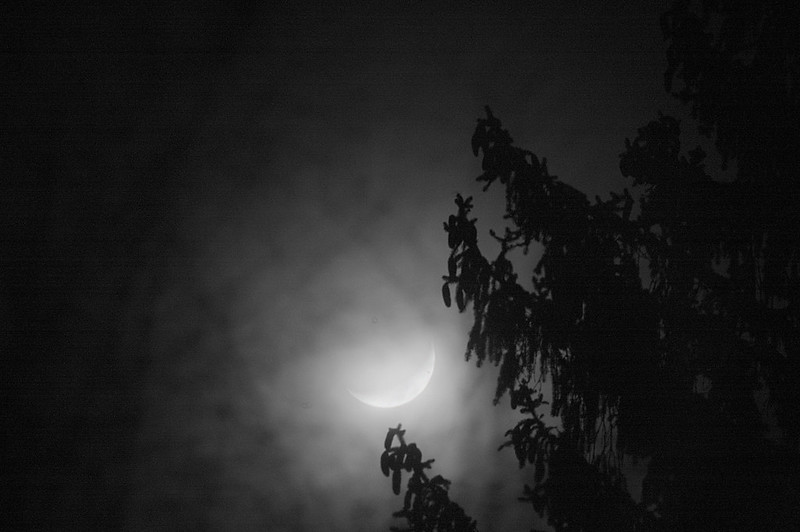
Spooky Creatures in the Pine Barrens
If you’re like me, you look forward to the Fall all year. The temperature finally drops, you can find pumpkin spice treats everywhere, and the best part…Halloween! By now, porches and lawns are decorated with fake spider webs, bats or other “scary” critters. Many of these typical scary Halloween critters are actually not scary at all! In fact, many of these creatures inhabit the Pine Barrens. In fact, they carry out vital functions to maintain a healthy ecosystem! Once you get to know these spooky creatures, you’ll look at them in a different light.
Big Brown Bats
Arguably one of the most well known symbols of Halloween is a bat. Often associated with vampires, bats gained the unfortunate reputation of being a blood-sucking monster. According to a study conducted by Brookhaven National Lab, Big Brown bats are the dominant bat species on Long Island. These bats mostly feed on pests like beetles, moths and, best of all, mosquitoes (the real blood-sucking monsters!).
Black and Yellow Spider
Another creepy creature that not only represents Halloween, but is a worst fear for many is a spider. The list of spider species found on Long Island goes on and on. However, it only felt right to hone in on the physically largest native spider species. If you’ve ever had the pleasure to host a black and yellow garden spider in your yard, you’ll know how massive and beautiful its webs can become. (Although it’s all fun and games until you accidentally run through one.) These circular webs act as traps for flying insects. The spider will usually hang from a web until the vibration of successful trapping signals the spider that dinner is ready.
Great Horned Owl
This next spooky critter can give someone the creeps just by making eye contact. Great Horned owls live in many areas across the country, including Long Island. Their intimidating appearance, along with their stealth and precision makes them a top predator. In fact they’re so powerful that they sometimes even harm smaller endangered birds. Their impact on other bird populations is the scariest thing about them…at least from a human standpoint.
Hopefully these creatures haven’t given you too much of a spook. Maybe you’ll even take on the challenge of spotting one in nature! In the past we’ve even covered more spooky sights to look out for in our Pine Barrens! So, start your exploration and have a very fun Halloween season!
By Miranda Gonzales, Long Island Pine Barrens Society
Sources:
http://www.nebwg.org/AnnualMeetings/2013/2013presentations/FishmanBatLongIsland.pdf
https://www.nwf.org/Educational-Resources/Wildlife-Guide/Invertebrates/Yellow-Garden-Spider
https://www.fireislandandbeyond.com/long-island-wildlife-bird-of-the-week-great-horned-owl/
Cover Photo: Tristian Chambers, Flickr CC
Posted on October 4, 2021 by Long Island Pine Barrens Society
Where are all the Fireflies?
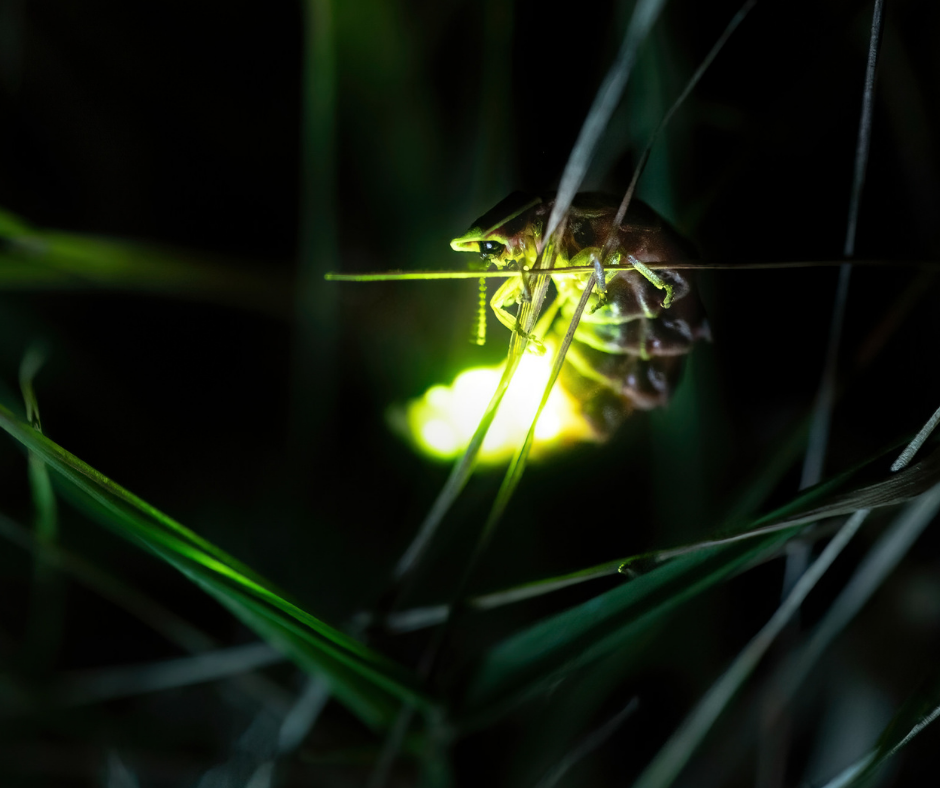
Where are all the Fireflies?
Who can deny their love for the little beetles that light up our nighttime skies? Perhaps you call them fireflies, moon bugs, or lightning bugs. These insects earned their names from their bioluminescence. Bioluminescence results from a chemical reaction — when oxygen combines with the chemical compound, luciferin, and creates light. As a child, I was infatuated by these critters. I used to catch them in my hands, name them, and release them. However, recently I’ve noticed the lack of these glowing bugs in the sky. So I’m left with one question: Where are all the fireflies?
Poor habitat conditions
Firefly beetles consist of over 2,000 species. You can find these species in eight different geographic locations: North America, Central America, Mexico, Europe, South Asia, East Asia and Southeast Asia. Of the 2,000 species, 125 species can be found in the United States. Fireflies favor humid climate regions, swamps or wetlands. Some species even live in microhabitats found in deserts. Fireflies rely on their habitats to survive. Unfortunately, poor habitat conditions threatens the survival our fireflies. Habitats are destroyed through urbanization or for agricultural purposes. They also face threats when people spray pesticides in hopes of eradicating mosquitos.
Interference in Mating
Fireflies don’t just light up for our enjoyment! Their bioluminescence plays a crucial part in the mating process. Fireflies light up to attract a mate, but with increased light pollution, potential mates can miss mating signals. Light pollution comes from street lights, commercial signs, sports arenas and more. As land development continues, the risk of light pollution only increases. When fireflies struggle to find mates, they cannot produce enough offspring to sustain their population. We cannot fix the light pollution problem overnight, but after becoming aware of this issue we can make changes in our own homes to help our firefly populations. Some of these changes include turning off outdoor lights when unnecessary, choosing outdoor lighting fixtures that point toward the ground rather than lighting up the general area, and installing motion sensor lights that only turn on when needed. While these efforts may not completely solve the issue of declining firefly populations, it’s a great way to start!
By Miranda Gonzales, Long Island Pine Barrens Society
Sources:
Posted on September 9, 2021 by Long Island Pine Barrens Society
Rainwater: The Good and The Bad
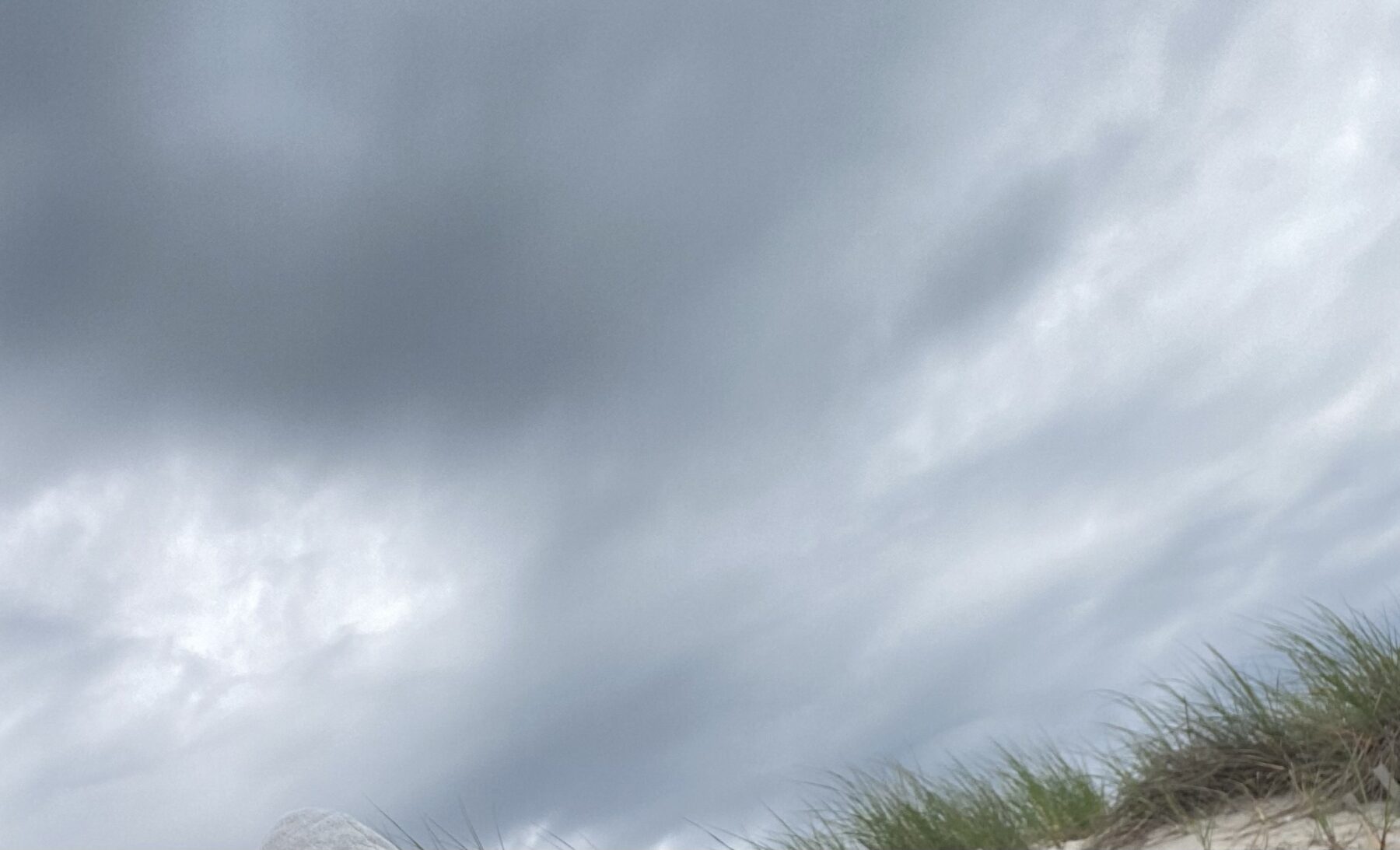
Rainwater: The Good and The Bad
Here at the Pine Barrens Society, we prioritize clean water. Perhaps you’ve seen our work protesting the development of “The Hills” luxury golf resort that would hinder our water quality, or our advocacy work to vote in favor of the Drinking Water Protection during this last election. But, sometimes our water quality can face issues that are not direct human impacts. While typically beneficial, rainwater can also have many negative effects on our water quality. So, what does this mean during a summer that has broken precipitation records on the east coast?

Aquifer Visual Source:USGS
First, The Bad News…
If you don’t already know, Long Island gets its drinking water from an underground aquifer system. Rainwater has both positive and negative effects on our aquifers. The greatest risk posed by rainwater is that it carries pollutants into our water supply. Rain cannot travel through paved surfaces, so it flows over these surfaces and picks up debris, bacteria, pesticides, and other pollutants. Eventually this runoff reaches a body of water or open space which does allow water to percolate through to the aquifer. Thus, runoff leads to contamination of our clean water. Other detrimental side effects of heavy rainfall include: risk of flood, soil erosion, and destruction to crops.
The Bright Side of Heavy Rainfall
Heavy precipitation is not all bad! In fact, we rely on precipitation to replenish our groundwater. As individuals, we can also take advantage of the rainfall by rain harvesting. Rain harvesting is the practice of capturing rainwater for later use. Certain parts of the world, such as the Caribbean islands, depend on rainwater harvesting for everyday use. Many homes have limestone roofs that drain rainwater to tanks stored in their basements which they use to shower, brush their teeth and more. However, Long Island homes do not come with these systems, so what can we do? We can take advantage of rainwater by leaving barrels outside to capture the rain and use the collected rainwater in our gardens and to wash our cars, thus conserving water and energy. Staying aware of weather forecasts to avoid watering our lawns on days with expected rain will also help conserve water.
By Miranda Gonzales, Long Island Pine Barrens Society
Sources:
https://www.bbc.com/news/magazine-38222271
Posted on August 26, 2021 by Long Island Pine Barrens Society
Monarchs & Milkweed: The Tale of Two Declining Species
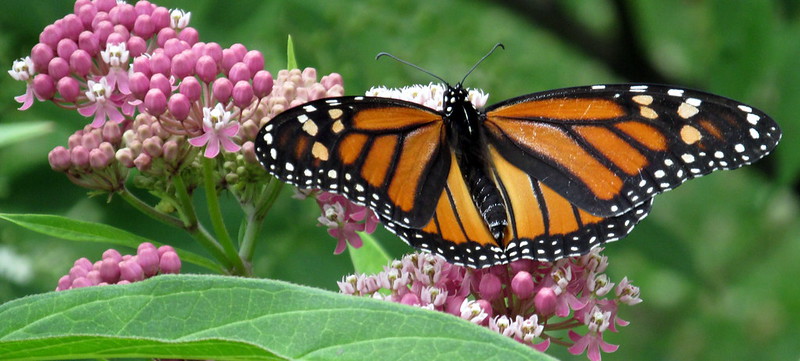
Monarchs & Milkweed: The Tale of Two Declining Species
With its bright orange wing color and thick black outline, it’s hard to miss a monarch butterfly when it flutters by. The monarch butterfly, a busy pollinator, is a welcome sign of its annual migration in late summer. Unfortunately, the eastern monarch butterfly populations continue to decline thanks to climate change, habitat fragmentation, and pesticide use.
Monarch butterflies are more than a pretty sight; they play a huge role in ecosystem functions. The eastern monarch population typically spends late summer to earlier fall pollinating in the northeast. When the temperature drops, the butterflies migrate to forests in Mexico. During their journey back north, monarchs will lay anywhere between 200-500 eggs. While this number may seem high, we must consider that most monarchs have a lifespan of only a few weeks. It’s critical that we provide a safe habitat of the surviving eastern monarch butterflies.
But how does milkweed tie into all of this?
Milkweed is a perennial plant that monarch caterpillars depend on to survive. Like the monarch species, this plant species is on the decline. Researchers from the National Wildlife Federation predict that if everyone adds a little milkweed to their gardens, we will see an increase in monarchs shortly thereafter. But be careful when handling milkweed. Milkweed contains poisonous chemicals to humans and animals that consume it or come in contact with its sap. The monarch caterpillar, however, has evolved to withstand its toxicity. In fact, the toxic chemicals the caterpillars consume act as a defense mechanism to deter predators.
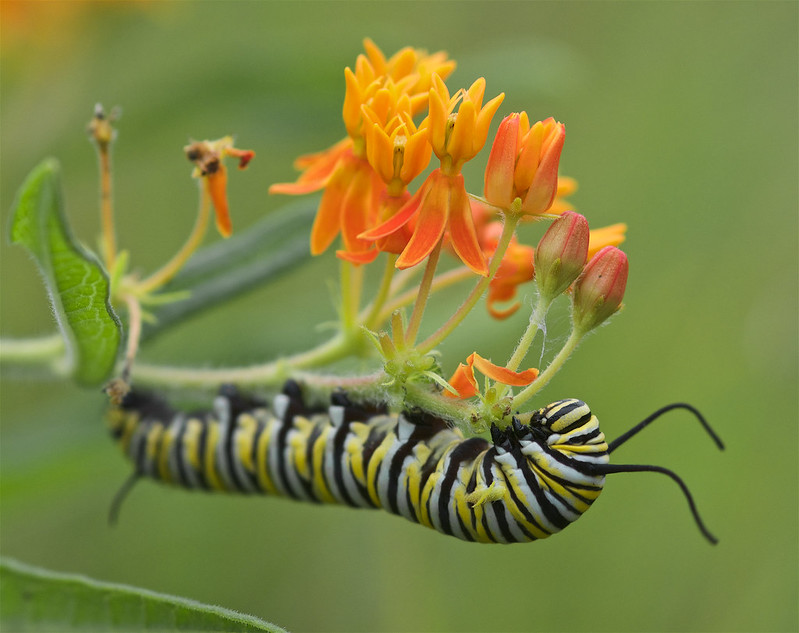
Monarch Caterpillar on Milkweed (Asclepias tuberosa).
Don’t let milkweed scare you though! As long as you take the proper precautions when handling milkweed you will not have an issue. These precautions include, wearing gloves, or covering your skin, washing your hands after handling, and making sure you, and children especially, can differentiate milkweed from other plants. Luckily, Milkweed has some unique identifiers. From June to August Milkweed produces dome-like clusters of little flowers with 5 petals, typically peeled back. Surrounded by the petals, you’ll also see a pod of seeds covered by another 5 hoods. By the fall, Milkweed will begin to release their seeds which get carried by the wind.
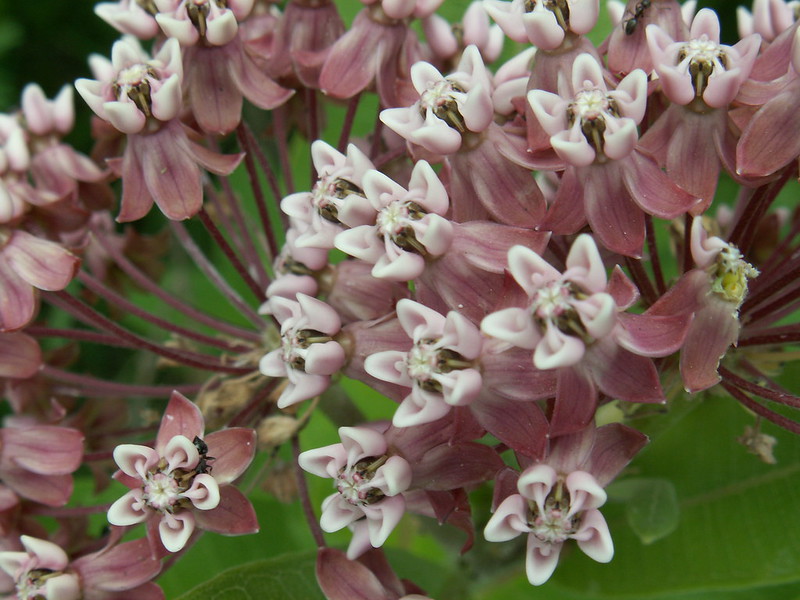
Milkweed with Petals Peeling Back
So, will you add some milkweed to your garden to help protect our monarch butterflies?
Check out Milkweed for eastern US for some tips!
–
By Miranda Gonzales, Long Island Pine Barrens Society
Sources:
https://biologicaldiversity.org/
https://medium.com/usfws/spreading-milkweed-not-myths-5df8c480912d
Posted on August 12, 2021 by Long Island Pine Barrens Society

